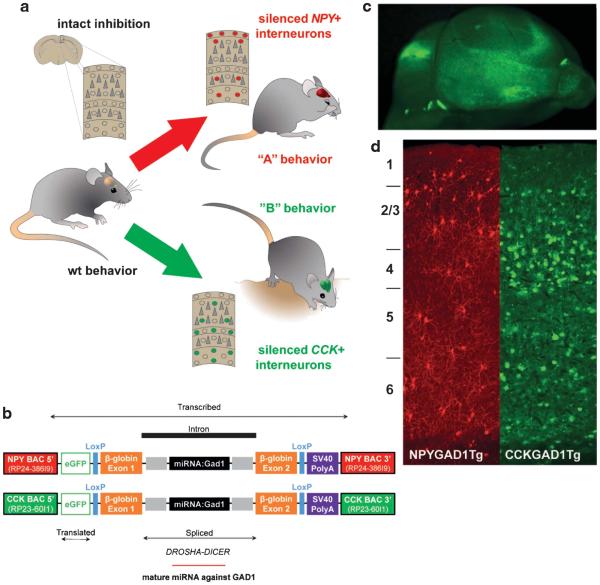Figure 1.
Cell type-specific suppression of glutamic acid decarboxylase (GAD1) in vivo. In a normal brain, intact inhibitory circuits modulate the function of individual principle cells and complex networks. In this study, we hypothesized that silencing neuropeptide Y (NPY+) (red) or cholecystokinin (CCK+) (green) interneurons would lead to different patterns of behavior (a). To test this hypothesis, we created a synthetic miRNA targeted to silence GAD1, the primary enzyme responsible for gamma-aminobutyric acid synthesis in the brain, and inserted it into two BAC constructs that limited expression of the transgene to NPY+ or CCK+ neurons, respectively (b). These constructs also produced enhanced green fluorescent protein (eGFP) (pseudocolored red for NPY+ cells and green for CCK+ cells for illustration purposes) to visualize and verify construct expression patterns (c,d).

